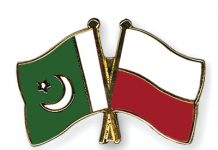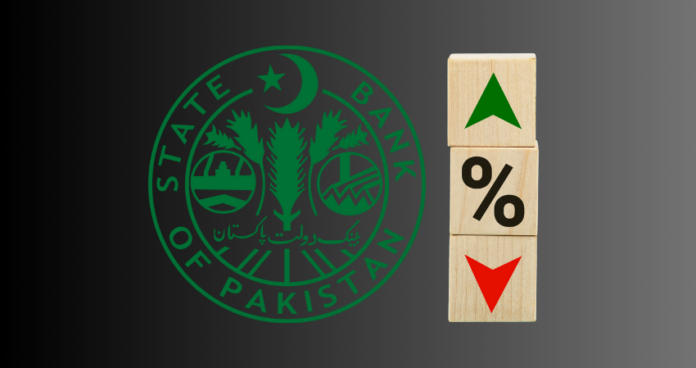The State Bank of Pakistan’s Monetary Policy Committee (MPC) delivered its fifth consecutive rate cut on Sunday, lowering the benchmark policy rate by 100 basis points to 11%. The decision, justified by sharp declines in food and energy prices, reflects growing confidence in the disinflation trend. Yet, beneath the headline numbers lies a far more complex economic picture—one that may demand greater caution than the MPC is signalling.
At first glance, the latest rate cut appears well-supported by data. Inflation, which had soared to a record 38% in May 2023, has plummeted to just 0.3% as of April 2025. This dramatic fall has turned real interest rates positive for the first time in years, giving the central bank the flexibility to stimulate economic activity without immediately risking inflationary pressures. The MPC noted rising consumer and business confidence, reflected in rebounding retail sales and improved credit demand, and projected further economic acceleration. However, the headline numbers obscure deeper structural concerns.
Much of the recent disinflation is not the result of improved supply chains or productivity gains in the economy, but rather the collapse in key commodity prices, especially food and energy. For instance, wheat prices have dropped by over 35% year-on-year, again, not because of some magical increased per acre yield but mainly due to a supply glut, an excess of wheat in a tightly regulated market, and restricted procurement by the government. All of which was a result of weak demand.
While this has brought welcome relief to urban consumers battling food insecurity, it has devastated the rural economy, where millions of households rely on wheat cultivation for their primary income. Many have faced steep losses from the last wheat crop and will likely reduce their spending on their upcoming spending on not just seeds, but also fertilisers, agricultural machinery, fast-moving consumer goods (FMCGs), and might also end up causing a real-time effect in the harvesting of the next Kharif crop.
The consequences are already visible and so are other consumer goods. Rural transport operators and service providers are also seeing reduced business. This emerging rural distress has weakened the initial recovery momentum seen in early 2025.
The Punjab government, despite initially touting the success of lowering food prices, is now considering market interventions to lift wheat prices, such as increasing government procurement, setting minimum support prices, or offering cash transfers to farmers. These measures, while aimed at stabilising farm incomes, would inevitably feed back into the inflation index, especially if implemented close to harvest season.
Beyond food, energy prices have also plunged—electricity rates are down 26.7% year-on-year, driven by excess LNG supply, currency appreciation, and weaker global demand. While this helps lower industrial costs and household bills in the short term, it also poses risks: if global oil markets tighten or Pakistan’s fuel imports face supply-side shocks, energy inflation could resurface abruptly, reversing recent gains.
What hence becomes the most important metric to look at is core inflation, which remains stubborn—at 8% in April—with prices rising in categories like education (+3.7% MoM), health (+0.6% MoM), and other services. These sectors are driven by structural wage pressures and regulated price adjustments, not international markets. With the minimum wage expected to rise in the next budget, wage-push inflation could amplify, especially in urban centers.
The SBP’s decision to ease rates further, while justified by the current inflation data, sits at a delicate crossroads. The improved inflation outlook may prove transient if food prices begin to rebound, fiscal pressures intensify, or the global commodity cycle turns. Additionally, premature easing could reignite inflation before expectations are fully anchored within the 5–7% target band.
Some analysts believe inflation may remain below 5% over the next year, but such projections risk underestimating the volatility embedded in Pakistan’s inflation dynamics—especially in a supply-driven environment. The central bank itself admitted that “some downside risks remain” to the growth outlook, which might soon need to be reconciled with emerging upside risks to inflation.
While the risks of the MPC decision remains very real, a healthy amount of well-placed optimism is also in abundance especially in the financial market. In its report IMS research states that the decision comes because of SBP’s “Outlook for softer global growth, backed by recent IMF estimate downgrades and sharply lower oil prices”
Meanwhile, other brokerages like Topline and AHL, put forth a positive outlook for the end of FY25 and the first half of the next financial year, placing a lot of weight on the upcoming budget.
Some other takeaways from the analyst briefing after the MPC are that Pakistan is to pay more than $1.3 billion in external debt before the end of June.
As per Governor, GDP growth in the 3rd quarter (Jan-Mar) would be better than first 2 quarters. As a result, Central bank has maintained it GDP growth target at 2.5-3.5% for FY25. To highlight, GDP growth in first and second quarters was 1.3% and 1.7%, respectively.
The SBP governor also commented that, current import numbers are line with SBP projections and are manageable.
With the real rate buffer now positive, the SBP has gained some policy space. But going forward, the pace and timing of future cuts may need to be calibrated more finely. A misstep could mean not only reversing recent disinflation gains but also deepening structural fragilities in the economy.
For now, the central bank has chosen optimism. But with core inflation sticky, the rural economy distressed, and the external environment uncertain, the fight against inflation may be far from over.
























